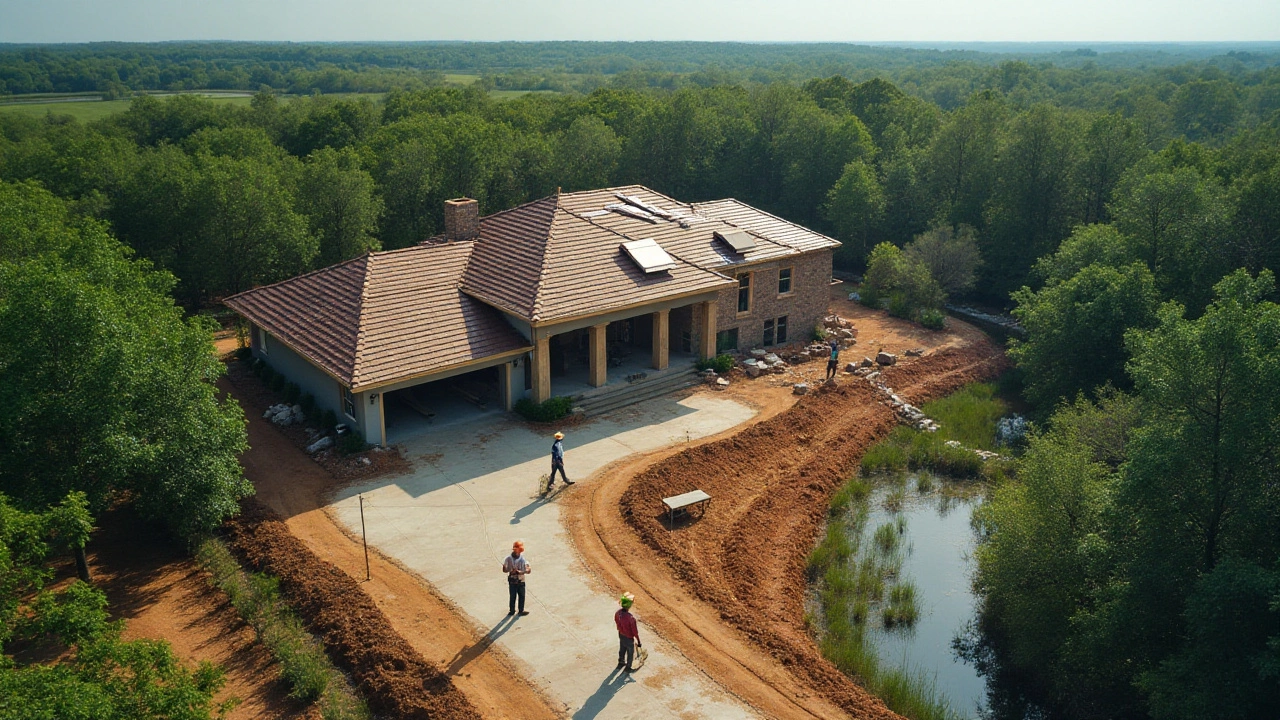Home Building Costs: What You Need to Know
Thinking about building a house? The first question that pops up is always the price tag. It’s easy to feel overwhelmed, but breaking the total down into bite‑size pieces makes it a lot less scary. Below you’ll find the main cost buckets, a few tricks to keep spending under control, and the kind of numbers you’ll see on a typical UK build.
Breaking Down the Major Cost Drivers
What you’re really paying for falls into six groups. First up is the land. In most parts of England and Scotland, the plot alone can be 30‑40% of your budget, especially in high‑demand areas. Next is the foundation – think excavating, concrete footings, and any special ground work. If the soil is tricky, you might need extra engineering, which bumps the price up.
The structure comes next: walls, roof framing, and external cladding. Materials like brick, timber, or steel have different price points, and the style you choose (e.g., double‑glazed windows vs. standard) will shift the total. Inside the house, finishes such as flooring, kitchen units, and bathrooms usually consume the largest chunk of the remaining budget because you’re paying for both materials and labour.
Don’t forget services – plumbing, electrical, heating, and ventilation. These are essential, and they’re easier to underestimate than you might think. Finally, professional fees cover architects, structural engineers, planning applications, and the builder’s margin. In a typical project, these fees hover around 10‑15% of the overall cost.
Tips to Keep Your Build on Budget
Start with a realistic cost calculator. Plug in your plot price, square footage, and material preferences, then add a 10% contingency for surprises. That little buffer saves a lot of stress when hidden issues pop up.
Choose a reliable builder early. Ask for detailed quotes, compare a few, and check references. A clear contract that spells out what’s included – and what isn’t – stops surprise invoices later on.
Consider standardised designs. Custom shapes and unique features look great, but they often demand more labour and specialised materials, which can blow up the budget. A slightly tweaked ‘cookie‑cutter’ plan can still feel personal while keeping costs down.
Plan your finishes wisely. Splurge on high‑traffic areas like the kitchen or main bathroom, but opt for cost‑effective alternatives in secondary rooms. For flooring, luxury vinyl plank gives the look of hardwood at a fraction of the price.
Stay involved during construction. Regular site visits let you catch small issues before they become big money‑eaters. If the builder suggests a change, ask how it impacts the total and whether there’s a cheaper way to achieve the same result.
When you add up land, foundation, structure, finishes, services, and professional fees, you’ll see where your money goes. With a solid plan, a trusted builder, and a few smart choices, you can keep your home building costs realistic and avoid the dreaded overrun.
Cost Breakdown: Building a 3,000 sq ft House in Louisiana 2025
- Gavin Whitaker
- |
- |
- 0
Building a 3,000 square foot home in Louisiana involves analyzing various costs, from land and materials to labor and permits. The state's unique climate and geography can influence these expenses. Understanding these aspects helps in budgeting for a new construction project. Tips for potential homeowners include setting a realistic budget and considering local regulations and land availability.
View more